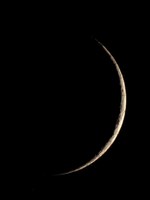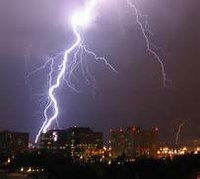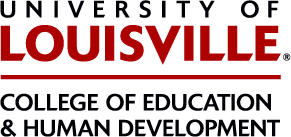- School Groups
- Educator Online Resources
- Educator Benefits
- Dual Field Experiences
- Educator Open House
- Grades 3-5 Field Experience Options
Grades 3-5 Field Experience Options
Two field experiences: $14/student:
Spend the day on campus! Schedule a morning 1.5 hour experience, break for a brown bag lunch in the planetarium lobby or outside courtyard, and come back into the planetarium dome for a second 1.5 hour experience.
While you're at UofL, take your students on a self-guided tour of campus.
Note: Each field experience ends with star tour, highlighting the constellations visible in the current night sky.
 Earth's Changing Landscape (1.5 hours):
Earth's Changing Landscape (1.5 hours):
Our journey will begin by observing the local environment around the University of Louisville and Kentucky before taking a virtual spaceship back in time. We will fly to the outermost distances of space and time that we currently have knowledge of and discuss early events that occurred during the formation of our universe. The Milky Way galaxy and our solar system will be explored, as we then uncover how Earth came to be in its current state. As we fly back to our planet, the importance of plate tectonics and natural processes will become clear in the formation of different rock types and a very different landscape than what once existed on Earth. Over billions of years, our landscape has changed dramatically and Kentucky has experienced a booming industry thanks to the changes that have taken place. Rich deposits of limestone have contributed to the evolution of horses and as a result, Kentucky is known for producing strong, fast thoroughbred horses. Join us in exploring the importance of our past for explaining our current success. This exploration includes our show, Supervolcanoes, which looks back at rare classes of eruptions that have marshaled the energy that lurks, like a sleeping dragon, beneath the surface of planet Earth. The experience concludes with a brief tour of the constellations in the night sky. NGSS Disciplinary Core Ideas: ESS1.C, ESS2.A, ESS2.B
(Note: make a day of it and schedule a dual Earth Science field experience with the planetarium and Kentucky Derby Museum. Click here for details.)
 Patterns in the Sky: Moon Phases and More (1.5 hours):
Patterns in the Sky: Moon Phases and More (1.5 hours):
From making sense of the patterns affecting our world to navigating featureless deserts and seas, the night sky has been a source of inspiration, information and navigation since the beginning of time. Students take an immersive visual journey through space and time to learn how our ancestors pieced together patterns, enabling them to measure time, create calendars and understand celestial phenomena such as moon phases. The wonder of the intricate dance of the Sun, Earth and Moon comes to life on the dome as our virtual journey illustrates key points such as the Earth’s rotation, day and night, patterns of the Sun’s motion across the sky, moon phases and more. Learners intuitively grasp difficult-to-understand concepts in this journey of discovery. This exploration includes the show Perfect Little Planet, which features an alien cartoon family touring our solar system for the perfect vacation spot, encountering unique and interesting elements of our solar system along the way. The experience concludes with a short tour of the constellations in the night sky as we turn our imaginations outward. NGSS Disciplinary Core Ideas: ESS1.A, ESS1.B, ESS2.C, PS4.B
Note: We recommend that the class complete a full month of moon observation prior to coming to the planetarium for this educational experience. Click here for a web-based moon-phase observation chart that can be printed.
 Seasons, Daily Weather and Climate (1.5 hours):
Seasons, Daily Weather and Climate (1.5 hours):
Weather is everywhere on Earth, all the time, changing daily, varying by location. Students get a space-eye view that allows them to easily grasp complex 3-dimensional aspects of seasonal variation. This visual immersion enables students to instinctively understand ideas such as the forces and elements that cause Earth’s dynamic, daily weather – the heating of the Sun, the winds that result, and interactions with water – as well as climate. Students virtually cruise in Earth’s orbit to compare various climate regions of the world and make connections to the Sun’s heating and to water. The flight to airless and waterless Mercury highlights a climate that is primarily divided into two different types – very hot and dry, and very cold and dry. A visit to Venus reveals even more extreme climate – where clouds and precipitation aren’t liquid water, but sulfuric acid. This exploration includes the show Dynamic Earth, which explores the inner workings of Earths climate system. The experience concludes with a short tour of the night sky as we turn our imaginations to what else might be out there. NGSS Disciplinary Core Ideas: ESS1.B, ESS2.A, ESS2.D
Show-Only Option
Also available for elementary schools is a traditional planetarium show followed by a star talk: 1 hour/$5 per student.
Next Generation Science Standards 3-Dimensional Alignment
Each field experience program for school groups targets select Next Generation Science Standards (NGSS). The programs are aligned with elements of all 3 dimensions of NGSS: disciplinary core ideas, science and engineering practices, and crosscutting concepts. The visually rich and engaging experiences supplement your classroom instruction to offer students additional opportunities to consider both science practices as well as relevant larger crosscutting concepts in connection with the core science ideas. Click “NGSS Alignment” below for details.



